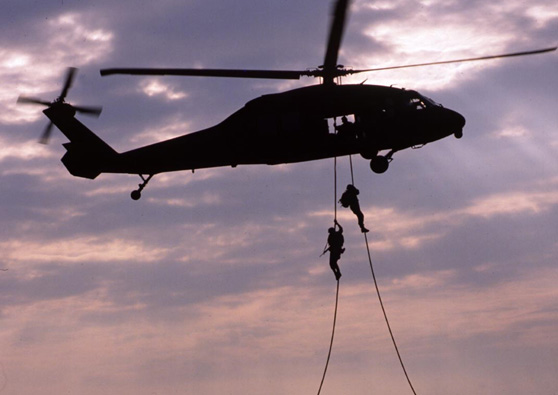
Looking at the lessons since Black Hawk Down
This October sees the twentieth anniversary of events that came to be known as Black Hawk Down, in which eighteen US military personnel and hundreds of Somalis died. Over a thousand Somalis were injured, hundreds of them civilians, though estimates vary greatly. It so horrified Americans at the time it led to the early withdrawal of US forces from Somalia and the collapse of the UN mission.
Today, Somalia appears to have the chance to rise from the ashes of incessant violence, state failure and humanitarian catastrophe. The US is among a number of countries that are seriously re-engaging in what was thought to be a hopeless cause for a long time after those tragic events in Mogadishu.
Central to this story of phoenix rising is the African Union peacemaking mission, AMISOM, that has pushed Islamist insurgents from virtually all the major urban centers of Somalia, leading to political, economic and social gains that are tangible and undeniable.
There is something about AMISOM that has meant it has been more successful than better-equipped, better-trained American forces have been in comparable counter-insurgency operations in recent times. My recent article for Stability: the International Journal of Security and Development, goes some way towards identifying why it has worked, particularly in relation to peace operations planned for Mali.
So great are the achievements of the six-year old African Union intervention, backed by the United Nations, that some have grasped at the “Somalia model” as an off-the-shelf peace making solution to tackle the unfolding crisis in Mali. There are many useful lessons to be learned but the Somali story must be remembered for the unique history of the conflict and bespoke peace-making solutions attempted. It must be remembered honestly as one of painfully won gains, dogged determination and adaptation to circumstances specific to a country that had hit rock bottom as a functioning state.
Principal among those lessons is one of strategic perseverance over the long term, and the US can be proud for believing from the start. Initially, international opinion was set against the undermanned, underequipped African force that was besieged in the confines of the capital’s airport for the first years of its deployment. Even when it doggedly fought its way block-by-block through downtown Mogadishu it took some time to turn around perceptions of the African force and create any agenda for hope for the war-torn country.
“Strategic” because AMISOM needed all three parts of a delicate jigsaw to sustain the use of force to force the insurgents back and get where it is today: military resource, political backing and financial support. The skilled military resolve of the soldiers who prosecuted the bloody urban combat taking casualties in large numbers along the way; the political resolve of those countries contributing troops, more-or-less united under the African Union banner; together with the just-in-time finances from western backers.
Without all three elements persisting over time the mission would have failed. And, it was only in that unprecedented combination, the African force kept the consent of Somalis, key African stakeholders and the wider international community, albeit with a high degree of fragility.
But what stands out clearest from the success of the African force in Somalia is it is just that; African. The successes of the determined force are solidly built on the journey they have taken on the streets of Mogadishu by themselves: trust slowly earned, Somali cultural understood, political lessons learned, military skills enhanced and vital equipment procured over five years of intense fighting.
 In contrast, in Mali, the international community appears to have had its hand forced, changing plans to respond with a French-led military effort, then looking to a west African force, and is now focused on a UN peacekeeping solution, MINUSMA. It continues to stubbornly push for elections next month.
In contrast, in Mali, the international community appears to have had its hand forced, changing plans to respond with a French-led military effort, then looking to a west African force, and is now focused on a UN peacekeeping solution, MINUSMA. It continues to stubbornly push for elections next month.
Even on last year’s plan for Mali, where a political process would preface an intervention by an African force, there were remarkable ambitions. Not only was the plan based on expected progress in such thorny issues as dealing with Azawad secession, historical under-development of the north and a weak central government, but also re-building the Mali army. It remains unclear as to how a majoritarian vote will bring settlement to these underlying issues.
The political cross currents in both Somalia and Mali are forecast to be turbulent at best for many years to come. Perhaps the political protagonists and peace builders in these countries will look back at the patience and determination of those AMISOM soldiers and mirror the military gains by identifying uniquely African – or should I say uniquely Somali and Mali – ways forward for these fragile countries.






[…] Looking at the lessons since Black Hawk Down […]
[…] Looking at the lessons since Black Hawk Down […]
[…] This blog was originally published at American Security Project. […]